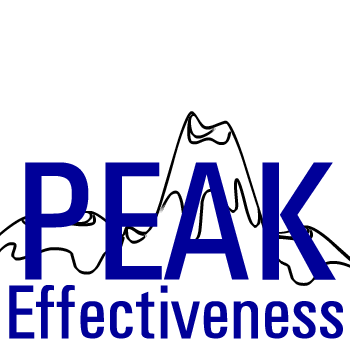






|
|
|
|
|
|
Get Engaged – At
Work and In Life!
Getting Started Writing Your Headlines
Now that you know what works, it is time to get started by writing your own headlines. Don't expect perfection from yourself. You will have to write many headlines to get the ones you want to use.
1. Start by writing down all of the
primary benefits that your readers will get by doing what you want
them to do with this particular piece you are writing. Note,
that this will not be the same for all pieces. For example, in
a classified ad, all you are trying to do is get them to request
further information. That's all.
In a follow-up
sales piece sent by autoresponder, you may try to sell them right
off, or you may be directing them to your web site in which the
presentation can be richer and more effective. Be clear that
you know exactly what you want him to do in response to this piece
and what the benefits are that the customer will get from doing what
you want him to do, NOW. Not the ultimate benefit he gets from
buying your product or service, but what he gets from responding
NOW.
2.. Start writing several headlines using each of the techniques. At first, you are just looking for quantity, getting the ideas flowing. Write down as many different kinds as possible. Don't quit just because one jumps out at you that you fall in love with. If you continue writing, you will probably create a few more that are even better. If the creative juices slow, set it aside for awhile and come back to it. It is sometimes amazing what you can come up with overnight.
3. Review the headlines that your most successful competitors use. Do these give you more ideas? Don't just copy theirs. Think about your Unique Selling Proposition. How can you work that in? What benefits do you provide that your competitor can not?
4. Once you have a selection of headlines written, start picking the ones you like best. Ask other people to read them and tell you which headlines they like best.
5. Test the ones you think are best.
6. Use what works best. Revise or throw away those which don't get the response you like. Try your selected headlines in different media, as what works in one media may not in another, and one that flops in one may work like magic in another. This is an art. The testing routine creates an element of science, but it is still largely an art.
Give headline writing the time it deserves. The headline is the most important part of your ad or article. If it doesn't attract them to read the ad, the rest of your effort is wasted. Some writers say to spend half of your time writing the headline, with the other half to the remainder of the copy!
Creating multiple versions of your headlines will not be wasted effort. You will need several, because you will want to include different headlines on your follow-up sales letters than the main sales letter.
Other Hints:
- Include "quotation marks" around your
headline. Studies show headlines get better results if
they're enclosed in quotation marks. Some say this increases your
response rate by 5-20%. The quotation marks make the headline
stand out and be read by your prospects a little bit
more.
- Don't use all Capital letters. On the
internet that is not only considered bad netiquette, but all
capital letters are more difficult to read. The last thing you
want to do is make your ad harder to read and offend your
customers.
- Show your picture near your headline.
It has been proven that using your picture on your web site or
sales letters can increase sales. Sometimes, a picture of the
product in action will get better results.
- A short three word headline may be
enough for classified ads.
- Spice your headlines with action words
like save, act, run, feel, and do.
- Try using "Quickly" and "Easily" in
some of your headlines. These may increase your response rate
because everyone is looking for Quick and Easy Solutions to their
problems.
- Use some of the
"magic"
words".
- Cut out unnecessary words.
- Put subheadings, i.e., additional
headlines, within your copy to break up stretches of text. The top
is not the only place to get and keep your reader's
attention. Keep pulling them through the copy.
Subheadings make it easy for the reader to get a sense of the
entire piece quickly as well.
If a reader can scan down your page, quickly digest your headline and subheadings, figure out what you're offering, and can see that you have something she is interesting in, she will take more time to read your entire letter, ad, or web page.
Conclusion:
Everybody is busy. We are all hit by more stimuli everyday than we can absorb, so we screen most things out. Only the things that interest us gets through our automatic filtering system. Your headlines must break through that filtering system by letting them know what is in it for them. Only then will you have the opportunity to get your customers to do what you want them to do.